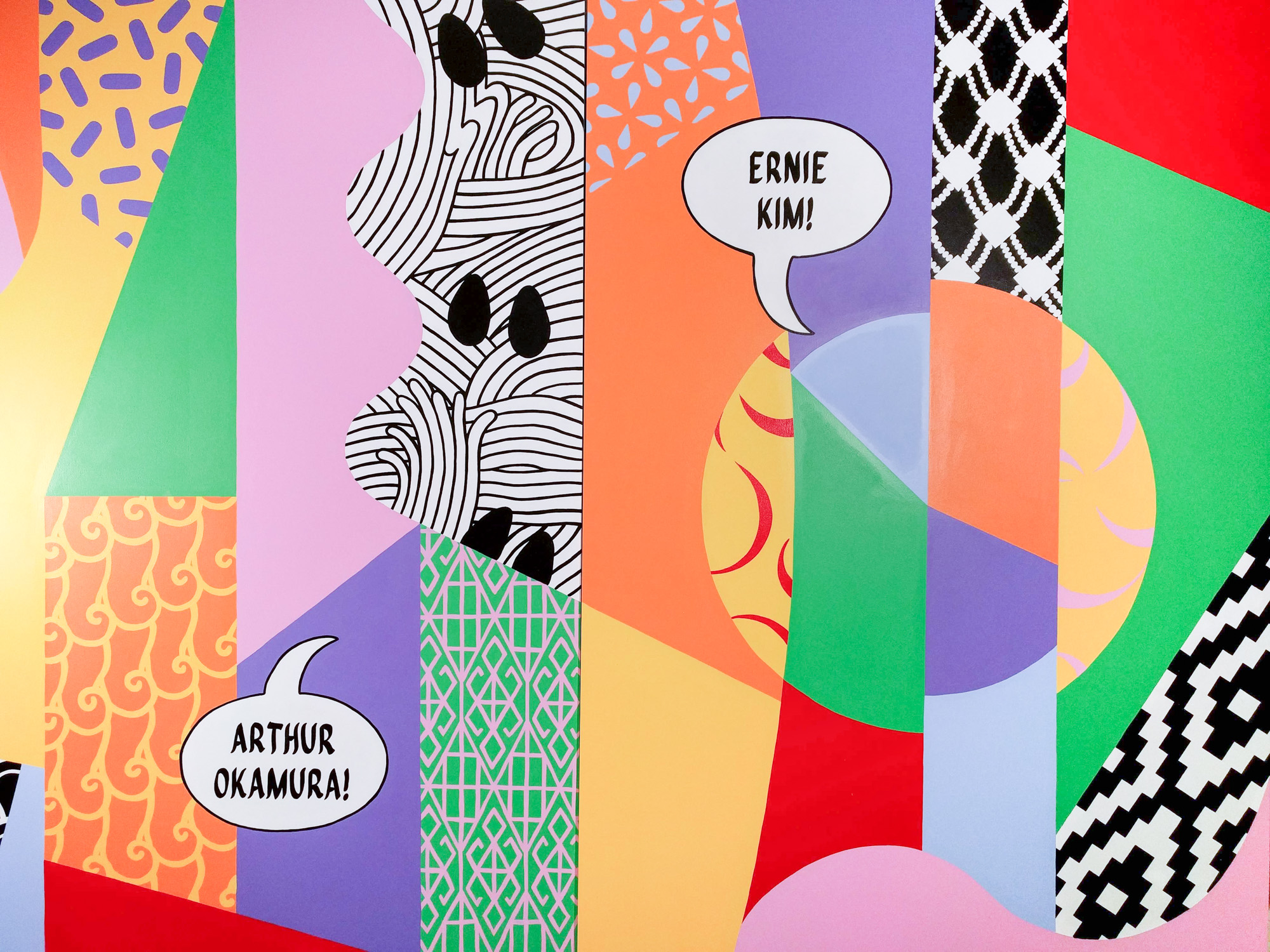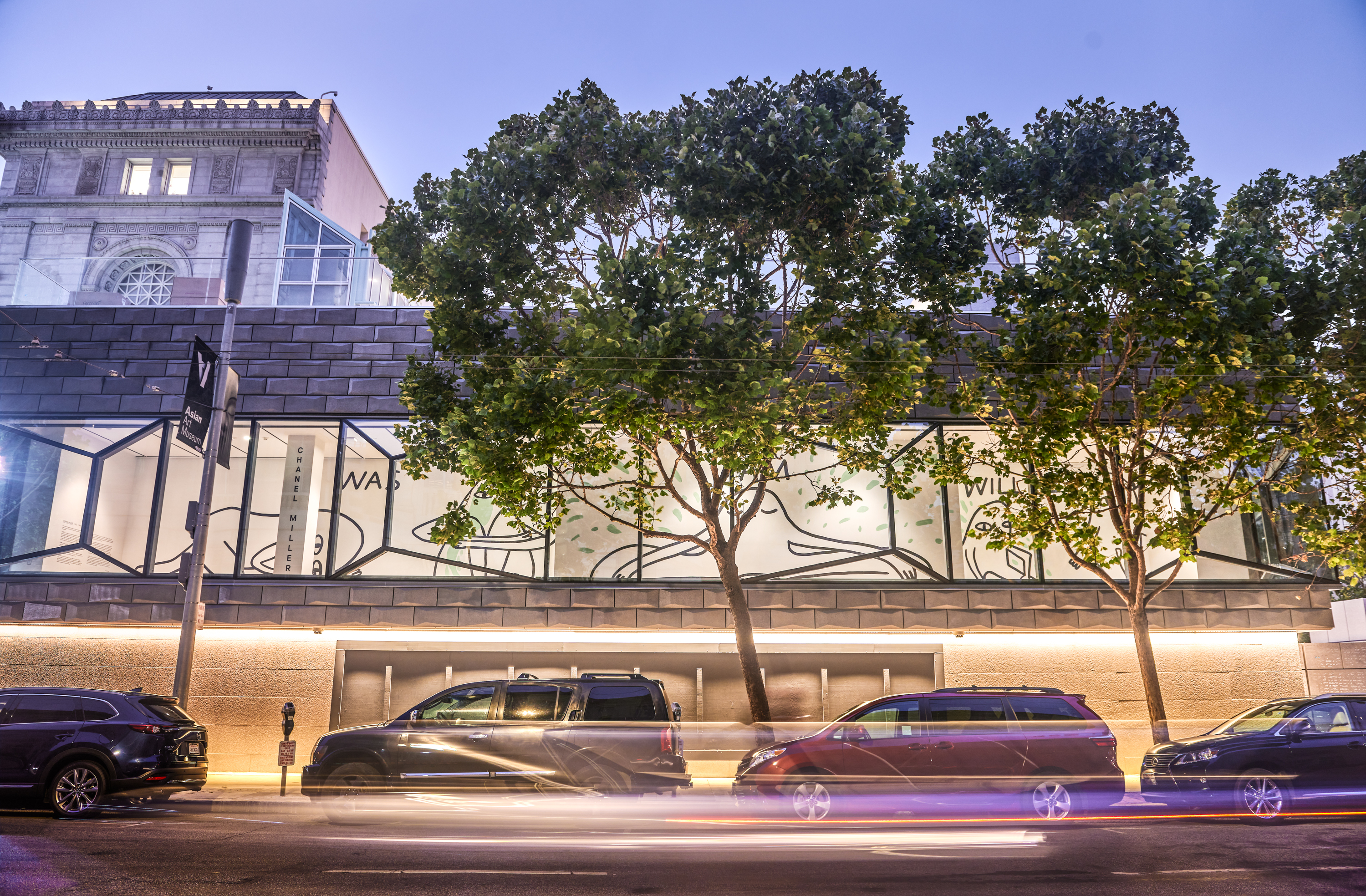Viewing as Civic Participation: Activism-Inspired Art at the Asian Art Museum
By Kaitlin Hao

Detail of JENIFER K. WOFFORD


With the combined pressures of Covid-19, the Black Lives Matter movement, and the impending 2020 election tearing at the social fabric of the United States, the role of art institutions in promoting civic engagement is more critical than ever. But how can art institutions meaningfully encourage societal discussions? The Asian Art Museum of San Francisco (AAM), demonstrates that civic awareness starts at the visual level, not only featuring socially engaged artworks, but also ensuring that the displays are accessible and locally resonant. A part of the AAM’s USD 100 million expansion (the opening of which has been delayed due to Covid-19), the newly constructed Akiko Yamazaki and Jerry Yang Pavilion conveys a transformed institutional identity, in which local activism is a source of curatorial inspiration.
The contrast between the museum’s old and new architectural styles illustrates the institution’s drastic shift in mission. While the museum’s original structure is a stately, intimidating Beaux-Arts-style building (formerly the Main Library of San Francisco) that conjures the authoritative prestige of top-down didacticism, the new pavilion eliminates the boundary between street and institution with enormous windows that pedestrians will be able to look into. Three artworks, strategically-positioned to be street-visible, further convey the AAM’s desire for local connection. Pattern Recognition, Don't Mess With Me, and I was, I am, I will be (all 2020), respectively executed by three Bay Area-connected, Asian-American female artists Jenifer K. Wofford, Jas Charanjiva, and Chanel Miller, not only echo the streets in their vivid colors and street-art styles, but also express a passion for activism that is ingrained in San Francisco’s identity.
Street murals are key to the city’s heritage and activism, especially in neighborhoods like Chinatown and the Latino Mission District. Often based on populist subject matters and with color palettes that reflect the surrounding community, these projects and their visual impacts are bound to their contexts. Thus, when transported to museums, street-inspired art often loses its civic power. Because the AAM retains the street-visibility of its street-inspired art, in addition to its locally inspired aesthetics, they preserve their powers of institutional subversion on both local and global scales.

Photo of JAS CHARANJIVA in front of the in-progress _Don
Charanjiva’s Don’t Mess With Me is a billboard-sized, graffiti-style painting of a fierce Indian woman rendered in bright fuchsia, earning her the nickname the Pink Lady. Donning a traditional sari and glittering bangles, she also flashes a pair of brass knuckles that read “BOOM.” Charanjiva originally pasted this image around Mumbai as a way to express her rage after the 2012 Nirbhaya case, when a woman was brutally gang-raped, beaten, and murdered by a group of men in South Delhi. The Pink Lady subsequently became a globally recognized symbol of the fight against femicide and the fight for women’s rights. Now installed on the exterior of the AAM’s outdoor terrace, the Pink Lady watches over the streets, her piercing gaze offering strength to whoever needs it.
Wofford’s mural, Pattern Recognition, installed directly on the building’s exterior, is a geometric explosion of the 1980s–’90s MTV aesthetic. Wofford sampled the design from her previous project, titled Klub Rupturre!! (2019), in which the pattern covered a room where Wofford hosted a dance party. The wild pattern and bright hues pay homage to both the historic queer dance party culture of the South of Market district and the palettes of the city’s mural art. In the AAM version, cartoonish speech bubbles pop up across the length of the mural, “shouting out” names of local Asian-American modern artists, such as Bernice Bing, Carlos Villa, and Ruth Asawa. The bubbles introduce historically excluded artists into the institutional canon as if they were participants of a dance hype circle. Upon closer examination, viewers will recognize that certain pattern elements were lifted from works of the highlighted artists or traditional patterns from ethnic groups historically under represented in the AAM, such as Tibetans, the Vietnamese, and Filipinos. Pattern Recognition encourages viewers to decolonize their own aesthetics and appreciate their origins, while also highlighting the museum’s own blind spots in diversity and inclusion.

View of CHANEL MILLER’s I was, I am, I will be,
Miller’s floor-to-ceiling vinyl, installed in an indoor gallery that will be illuminated 24/7, conveys mindfulness and conscious action. Charming alien-like forms embody states that progress from distressed to meditative and active, illustrating the phrase, “I was, I am, I will be.” Executed in clean lines that evoke cartoons or the iconic styles of other Bay Area street-inspired artists like Barry McGee, Margaret Kilgallen, and Clare Rojas, its visual familiarity is comforting. Miller’s soothing visuals contrast her traumatic past, as the initially anonymous plaintiff in a 2016 sexual assault case that made national headlines. Her subsequent decision to reveal her identity was a revolutionary stance against victim-shaming culture. The work, with its statement “I will be,” anticipates forthcoming actions and changes that viewers locate and enact within themselves.
While it is to be determined whether these artworks possess the rallying ability that defines civic engagement, as opposed to symbolically representing the importance of local visibility, they encourage visitors and passersby alike to consider the act of looking as civic participation, and externally signal the gathering that can occur within the museum’s walls.

Kaitlin Hao is an editorial intern at ArtAsiaPacific.
To read more of ArtAsiaPacific’s articles, visit our Digital Library.







